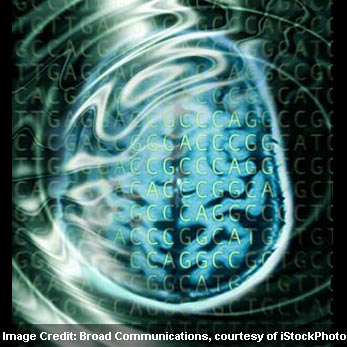
“These discoveries are an important step forward, but just one of many that are needed to fully dissect the complex genetics of this disorder,†commented Mark Daly, one of the study’s senior authors, a senior associate member at the Broad Institute of Harvard and MIT and an associate professor at the Center for Human Genetic Research at Massachusetts General Hospital (MGH). “The genomic regions we’ve identified help shed additional light on the biology of autism and point to areas that should be prioritized for further study.â€
Autism is believed to be extremely heritable. Around 90% of the disorder is thought to be genetic in origin. Yet the bulk of autism cases cannot be credited to recognized inherited causes.
Aravinda Chakravarti, professor of medicine, pediatrics and molecular biology and genetics at the McKusick-Nathans Institute of Genetic Medicine at Johns Hopkins, and one of the study’s senior authors, mentioned, “The biggest challenge to finding the genes that contribute to autism is having a large and well studied group of patients and their family members, both for primary discovery of genes and to test and verify the discovery candidates. This latest finding would not have been possible without these many research groups and consortia pooling together their patient resources. Of course, they would not have been possible without the genomic scanning technologies either.â€
To examine autism’s complex genetic architecture, a big multinational partnership led by researchers at the Broad Institute of Harvard and MIT, Massachusetts General Hospital, Johns Hopkins University and elsewhere formulated a two-pronged, genome-scale method. The first component utilizes a family-based method known as linkage that may examine DNA from autism patients and their family members to identify parts of the genome that could harbor uncommon but high-impact DNA variants. The second harnesses a population-based method called ‘association’ that could inspect DNA from unconnected individuals and may uncover common genetic variants linked with autism and which could be inclined to apply more modest effects.
For their preliminary analysis, the experts observed around half a million genetic markers in approximately more than 1,000 families from the Autism Genetic Resource Exchange (AGRE) and the US National Institute of Mental Health (NIMH) repositories. Follow-up investigations were conducted in partnership with the Autism Genome Project as well as other international groups.
The outcome apparently underlines three areas of the human genome. These supposedly comprise parts of chromosomes 6 and 20. The other chief result, this one coming from the population-based analysis, may be a single-letter alteration in the genetic code called as a single nucleotide polymorphism, or SNP. This general variant lies on chromosome 5 close to a gene called semaphorin 5A, which may be believed to assist in steering the growth of neurons and their long projections known as axons. Remarkably, the activity or ‘expression’ of this gene seems to be decreased in the brains of autism patients as opposed to those without the disorder.
Co-lead author Lauren Weiss, a former postdoctoral fellow who collaborated with Daly and his colleagues at MGH and the Broad Institute. Weiss is now an assistant professor of psychiatry and human genetics at University of California, San Francisco (UCSF), quoted, “These genetic findings give us important new leads to understand what’s different in the developing autistic brain compared with typical neurodevelopment. We can now begin to explore the pathways in which this novel gene acts, expanding our knowledge of autism’s biology.â€
Upcoming studies may incorporate bigger patient associates and higher resolution genomic technologies, like next-generation DNA sequencing. It apparently assures to yield a deeper understanding of autism and its complex genetic roots
This study was published in the journal Nature.
